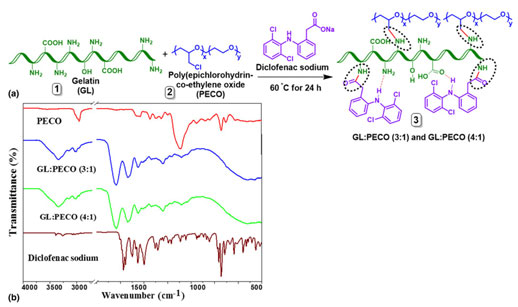Crossref Citations
This article has been cited by the following publications. This list is generated based on data provided by
Crossref.
Mamidi, Narsimha
Romo, Irasema Lopez
Leija Gutiérrez, Héctor Manuel
Barrera, Enrique V.
and
Elías-Zúñiga, Alex
2018.
Development of forcespun fiber-aligned scaffolds from gelatin-zein composites for potential use in tissue engineering and drug release.
MRS Communications,
Vol. 8,
Issue. 3,
p.
885.
Mamidi, Narsimha
Romo, Irasema Lopez
Barrera, Enrique V.
and
Elías-Zúñiga, Alex
2018.
High throughput fabrication of curcumin embedded gelatin-polylactic acid forcespun fiber-aligned scaffolds for the controlled release of curcumin.
MRS Communications,
Vol. 8,
Issue. 4,
p.
1395.
Meenarathi, B.
Jeyaselvi, J.
Sowmiya, S.
Tung, Kuo-Lun
and
Anbarasan, R.
2018.
Synthesis, characterization and drug release activity of poly(epichlorohydrin-g-furosemide) system.
Chemical Papers,
Vol. 72,
Issue. 12,
p.
2987.
Zargarian, Seyed Shahrooz
Haddadi‐Asl, Vahid
Kafrashian, Zahra
Azarnia, Mojdeh
Mirhosseini, Mohammad Masoud
and
Seyedjafari, Ehsan
2019.
Surfactant‐assisted‐water‐exposed versus surfactant‐aqueous‐solution‐exposed electrospinning of novel super hydrophilic polycaprolactone based fibers: Analysis of drug release behavior.
Journal of Biomedical Materials Research Part A,
Vol. 107,
Issue. 3,
p.
597.
Mamidi, Narsimha
Villela Castrejón, Javier
and
González-Ortiz, Aldo
2020.
Rational design and engineering of carbon nano-onions reinforced natural protein nanocomposite hydrogels for biomedical applications.
Journal of the Mechanical Behavior of Biomedical Materials,
Vol. 104,
Issue. ,
p.
103696.
Mamidi, Narsimha
Zuníga, Alex Elías
and
Villela-Castrejón, Javier
2020.
Engineering and evaluation of forcespun functionalized carbon nano-onions reinforced poly (ε-caprolactone) composite nanofibers for pH-responsive drug release.
Materials Science and Engineering: C,
Vol. 112,
Issue. ,
p.
110928.
Mamidi, Narsimha
Velasco Delgadillo, Ramiro
Gonzáles Ortiz, Aldo
and
Barrera, Enrique
2020.
Carbon Nano-Onions Reinforced Multilayered Thin Film System for Stimuli-Responsive Drug Release.
Pharmaceutics,
Vol. 12,
Issue. 12,
p.
1208.
Mamidi, Narsimha
Delgadillo, Ramiro Manuel Velasco
and
González-Ortiz, Aldo
2021.
Engineering of carbon nano-onion bioconjugates for biomedical applications.
Materials Science and Engineering: C,
Vol. 120,
Issue. ,
p.
111698.
Ma, Lulu
Liu, Feng
Liu, Dongyu
and
Liu, Yaolu
2021.
Review of Strain Rate Effects of Fiber-Reinforced Polymer Composites.
Polymers,
Vol. 13,
Issue. 17,
p.
2839.
Tarrahi, Roshanak
Khataee, Alireza
Karimi, Afzal
Golizadeh, Morteza
and
Ebadi Fard Azar, Farbod
2021.
Development of a cellulose-based scaffold for sustained delivery of curcumin.
International Journal of Biological Macromolecules,
Vol. 183,
Issue. ,
p.
132.
Mamidi, Narsimha
Delgadillo, Ramiro Manuel Velasco
and
Castrejón, Javier Villela
2021.
Unconventional and facile production of a stimuli-responsive multifunctional system for simultaneous drug delivery and environmental remediation.
Environmental Science: Nano,
Vol. 8,
Issue. 7,
p.
2081.
Ding, Yingli
Chen, Xiangjian
Huang, Dong
Fan, Baomin
Pan, Li
Zhang, Kunyu
and
Li, Yuesheng
2021.
Post-chemical grafting poly(methyl methacrylate) to commercially renewable elastomer as effective modifiers for polylactide blends.
International Journal of Biological Macromolecules,
Vol. 181,
Issue. ,
p.
718.
Wang, Hang
Chen, Xiangjian
Ding, Yingli
Huang, Dong
Ma, Yilian
Pan, Li
Zhang, Kunyu
and
Wang, Huaiyuan
2021.
Combining novel polyether-based ionomers and polyethylene glycol as effective toughening agents for polylactide.
Polymer,
Vol. 229,
Issue. ,
p.
123964.
Alam, Rabeya Binta
Ahmad, Md. Hasive
Sakib Pias, S. M. Nazmus
Mahmud, Eashika
and
Islam, Muhammad Rakibul
2022.
Improved optical, electrical, and thermal properties of bio-inspired gelatin/SWCNT composite.
AIP Advances,
Vol. 12,
Issue. 4,
Chen, Jia
Hu, Hengwei
Song, Tiandan
Hong, Song
Li, Yan Vivian
Wang, Ce
Hu, Ping
and
Liu, Yong
2022.
Competitive effects of centrifugal force and electric field force on centrifugal electrospinning.
Iranian Polymer Journal,
Vol. 31,
Issue. 9,
p.
1147.
Atıcı, Bülin
Ünlü, Cüneyt H.
and
Yanilmaz, Meltem
2022.
A Review on Centrifugally Spun Fibers and Their Applications.
Polymer Reviews,
Vol. 62,
Issue. 1,
p.
1.
Mamidi, Narsimha
García, Rubén Gutiérrez
Martínez, José Daniel Hernández
Briones, Camila Martínez
Martínez Ramos, Andrea Michelle
Tamez, María Fernanda Leal
Del Valle, Braulio González
and
Segura, Francisco Javier Macias
2022.
Recent Advances in Designing Fibrous Biomaterials for the Domain of Biomedical, Clinical, and Environmental Applications.
ACS Biomaterials Science & Engineering,
Vol. 8,
Issue. 9,
p.
3690.
García-Valderrama, Elsy J.
Mamidi, Narsimha
Antunes-Ricardo, Marilena
Gutiérrez-Uribe, Janet A.
Del Angel-Sanchez, Karina
and
Elías-Zúñiga, Alex
2022.
Engineering and Evaluation of Forcespun Gelatin Nanofibers as an Isorhamnetin Glycosides Delivery System.
Pharmaceutics,
Vol. 14,
Issue. 6,
p.
1116.
Popa, Marcel
and
Atanase, Leonard Ionut
2022.
Biological Macromolecules.
p.
393.
Huesca-Urióstegui, Kathya
García-Valderrama, Elsy J.
Gutierrez-Uribe, Janet A.
Antunes-Ricardo, Marilena
and
Guajardo-Flores, Daniel
2022.
Nanofiber Systems as Herbal Bioactive Compounds Carriers: Current Applications in Healthcare.
Pharmaceutics,
Vol. 14,
Issue. 1,
p.
191.






